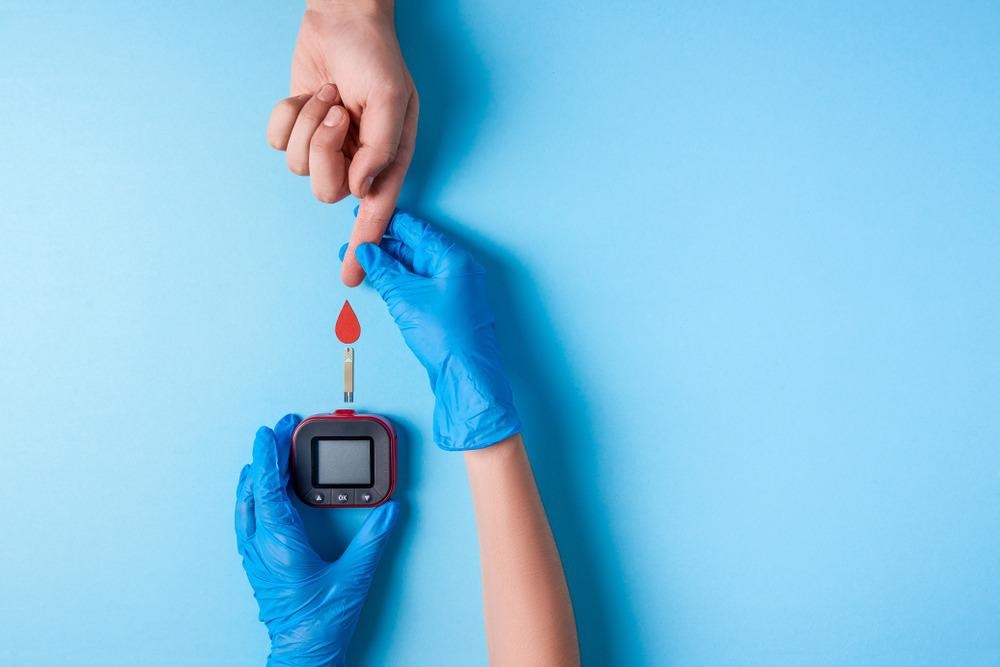Researchers at the University of Miami Miller School of Medicine have created RNA molecules that bind to human pancreatic beta cells, which generate insulin and are destroyed in type 1 and type 2 diabetes patients. This targeted strategy might aid specialists in better understanding how these diseases proceed and developing new therapy options. The report was published in Nature Communications on April 5th, 2022.

Image Credit: Kateryna Novikova/Shutterstock.com
We created a tool to deliver agents specifically to human beta cells. This gives us new capabilities. We can use PET or CT scans to count beta cells and measure disease progression, and we can deliver therapies directly to beta cells without causing side effects in other parts of the body.”
Paolo Serafini, PhD, Study Senior Author and Associate Professor, Department of Microbiology and Immunology, Miller School of Medicine, University of Miami
An autoimmune reaction that attacks pancreatic beta cells causes type 1 diabetes. The immune system gradually kills these vital insulin-producing cells, resulting in the body’s inability to manage glucose levels, resulting in a serious blood vessel and organ damage. Insulin is a helpful therapy, but it is not a cure.
Type 2 diabetes progresses differently. Insulin resistance develops in cells, requiring beta cells to work harder to generate more of the hormone. Beta cells can eventually die of exhaustion, resulting in a reversal of glucose metabolism.
The number of beta cells alive in the pancreas at any given time has never been accurately counted by researchers studying these diseases. Researchers rely on proxy measurements like glucose levels, which only give a limited picture of how these disorders progress.
Scientists working on remedies are frequently hampered by the toxicity and other adverse effects associated with systemic therapy; they have long wished for a mechanism that could deliver drugs directly to beta cells.
If we treat patients with non-targeted drugs that encourage beta cells to proliferate, those agents can affect many other tissues and potentially cause cancer. Similarly, if we try to protect beta cells from the autoimmune response, non-targeted treatments will cause systemic immunosuppression, leaving patients vulnerable to pathogens and, again, cancer.”
Paolo Serafini, PhD, Study Senior Author and Associate Professor, Department of Microbiology and Immunology, Miller School of Medicine, University of Miami
Dr Serafini and colleagues solved these concerns by developing two separate aptamers, which are small RNA molecules that target beta cells while ignoring other tissues. Scientists can then attach extra molecules to the beta cells to illuminate them (for imaging) or to cure the condition.
This will open up new possibilities for scientists to develop tailored therapies that boost beta cell proliferation or decrease immunity locally without producing systemic negative effects. Furthermore, being able to properly determine beta cell mass will aid future research.
It’s going to be cheaper and easier to perform clinical trials because we will be able to see exactly what’s happening to beta cells in real time. In the past, we had to measure glucose or insulin to infer what was happening in the pancreas. Now, we can actually see it.”
Paolo Serafini, PhD, Study Senior Author and Associate Professor, Department of Microbiology and Immunology, Miller School of Medicine, University of Miami
Potential treatment approaches have already been tested by the researchers. Researchers are doing preclinical investigations with WiNK Therapeutics and the Juvenile Diabetes Research Foundation (JDRF) with the hopes of moving these techniques into human trials in the next several years.
“We are working with JDRF on follow-up studies to block the autoimmune response and encourage beta cells to proliferate. In theory, with sufficient treatment, we can increase beta cell mass to reverse diabetes and also protect beta cells from autoimmunity so people no longer need insulin,” Dr Serafini concluded.
Source:
Journal reference:
Van Simaeys, D., et al. (2022) RNA aptamers specific for transmembrane p24 trafficking protein 6 and Clusterin for the targeted delivery of imaging reagents and RNA therapeutics to human β cells. Nature Communications. doi.org/10.1038/s41467-022-29377-3.